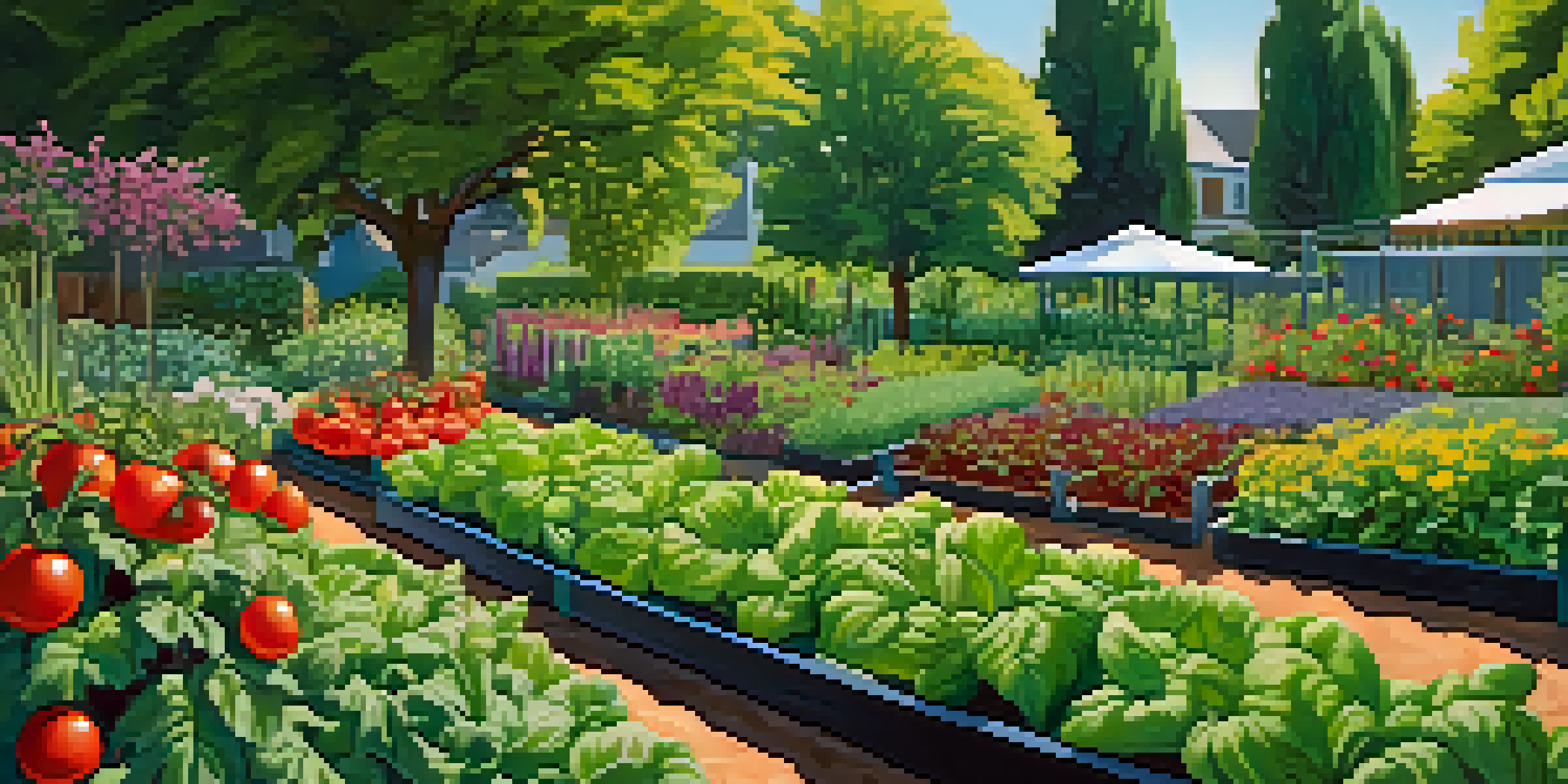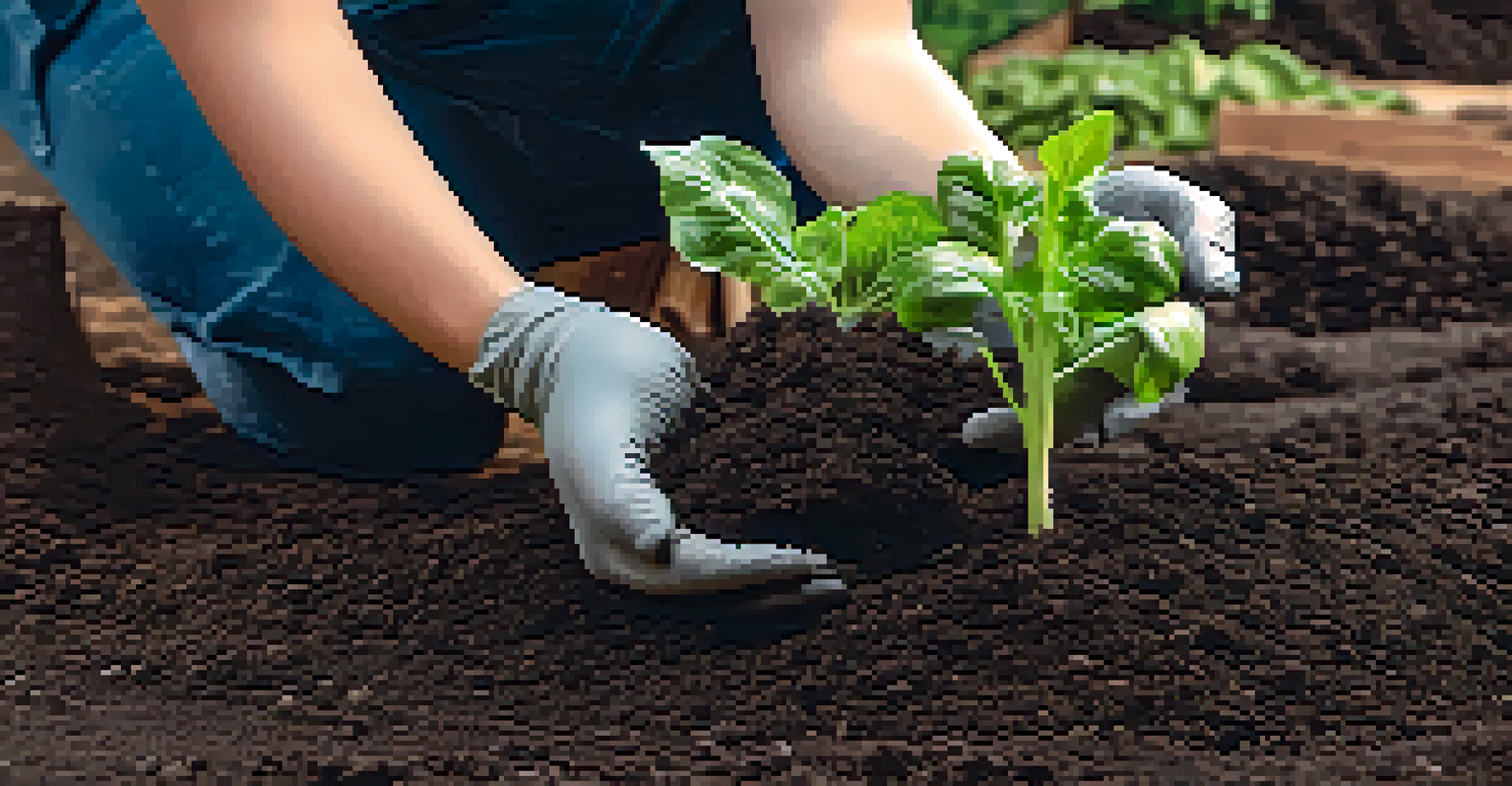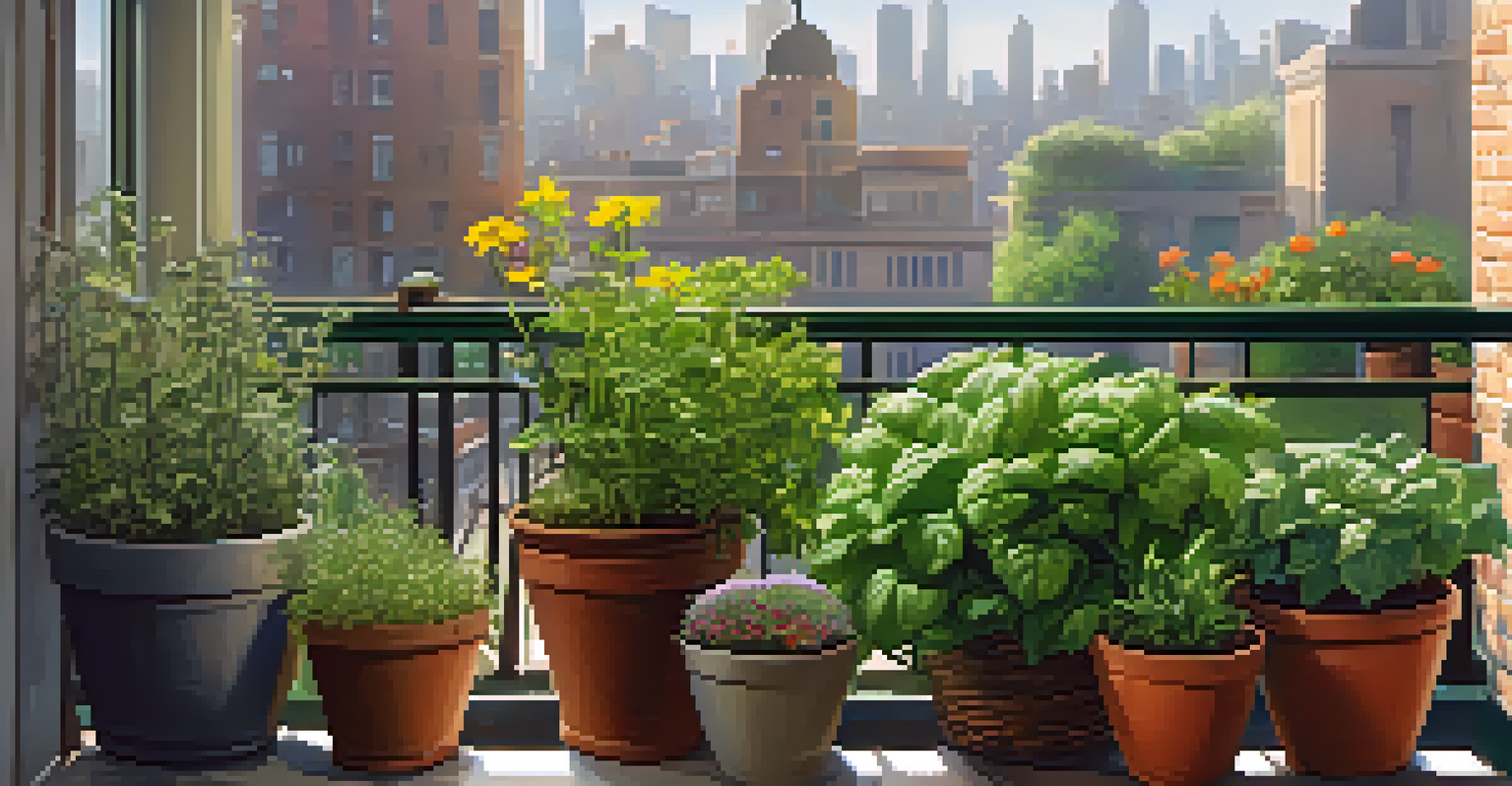Creating a Sustainable Veggie Garden in Your Backyard

Understanding the Basics of Sustainable Gardening
Before diving into the dirt, it's important to grasp what sustainable gardening really means. At its core, it's about growing food in a way that doesn't harm the environment and preserves natural resources for the future. Think of it as giving back to the Earth while reaping the delicious benefits of homegrown veggies.
The greatest threat to our planet is the belief that someone else will save it.
Sustainable gardening practices can range from composting kitchen scraps to using organic pest control methods. By focusing on these practices, you not only enhance your garden's productivity but also contribute positively to the ecosystem in your neighborhood. It's a win-win scenario that helps you feel more connected to the land.
The beauty of starting a sustainable garden lies in its simplicity. You don’t need a huge backyard; even a small balcony can be transformed into a green haven. Just a little knowledge and a bit of effort can lead you to create a flourishing veggie space that’s both productive and environmentally friendly.
Choosing the Right Location for Your Garden
Location is everything when it comes to gardening. Ideally, you want a spot in your yard that receives ample sunlight, has good drainage, and is easily accessible for watering and maintenance. A sunny patch will ensure your veggies get enough energy to grow, while well-drained soil prevents waterlogging.

Take a moment to observe your yard throughout the day. Notice where the sun shines the most and whether any trees cast shadows during certain hours. Finding that sweet spot will be crucial for your plants' health, as most vegetables thrive best in at least six hours of sunlight each day.
Sustainable Gardening Basics
Sustainable gardening focuses on growing food in an eco-friendly manner that conserves natural resources.
Also, consider how close your garden is to a water source. Having easy access to water will simplify your gardening routine, especially during those hot summer months. With the right location, your sustainable garden can flourish beautifully without too much extra effort.
Soil Preparation: The Foundation of Your Garden
Healthy soil is the backbone of a successful veggie garden. Before planting, take the time to prepare your soil by testing its pH and nutrient levels. You can purchase a simple soil test kit from a gardening store or online, which will help you understand what amendments your soil may need.
Gardening adds years to your life and life to your years.
Once you have the test results, you can enrich your soil with organic materials like compost or well-rotted manure. These amendments not only boost nutrient content but also improve soil structure, enhancing its ability to retain moisture. Just imagine your soil as a sponge, soaking up water and nutrients that your plants will later use.
Don’t forget to regularly turn your soil and add new organic matter throughout the growing season. This practice will keep your garden vibrant and productive while also promoting a healthy ecosystem of beneficial organisms. Remember, your plants thrive when their roots are happy, and it all starts with the soil.
Selecting the Right Vegetables for Your Climate
Not all vegetables are created equal when it comes to growing conditions. It's essential to choose varieties that thrive in your specific climate zone. Researching your local growing conditions, such as temperature and rainfall patterns, will help you make informed decisions about what to plant.
For instance, if you live in a warmer climate, vegetables like tomatoes and peppers may flourish, while cooler regions might be better suited for leafy greens and root vegetables. Understanding your climate is key to setting yourself up for success and minimizing the risk of crop failure.
Choosing the Right Location
Selecting a spot with ample sunlight and good drainage is crucial for ensuring your plants thrive.
Additionally, consider planting native varieties or heirloom seeds. These plants are often more resilient to local pests and diseases, making them a sustainable choice for your garden. By selecting the right vegetables, you’ll not only enjoy a bountiful harvest but also contribute to local biodiversity.
Implementing Companion Planting Techniques
Companion planting is a fun and effective way to maximize your garden's potential. This technique involves planting different vegetables together that benefit each other, which can help deter pests, improve growth, and even enhance flavor. For example, planting basil next to tomatoes can enhance the taste of both.
Another classic pairing is carrots and onions. The scent of onions can help mask the smell of carrots from pests that would typically target them. By strategically placing plants next to each other, you create a natural pest control system, reducing the need for chemical interventions.
Companion planting not only contributes to a healthier garden but also creates a more vibrant ecosystem. It encourages biodiversity, attracting beneficial insects that can pollinate your plants and keep harmful pests at bay. Plus, it’s a great way to experiment with different plant combinations and discover what works best for your garden.
Watering Wisely: Conserving Resources in Your Garden
Water is a precious resource, and using it wisely is essential for sustainable gardening. Instead of watering your garden daily, try deep watering a couple of times a week. This encourages plants to develop deeper root systems, making them more resilient to dry spells.
Consider implementing rainwater harvesting systems, such as rain barrels, to collect water from your roof. Using rainwater not only conserves municipal water supply but also provides your plants with soft water that’s free from chemicals found in tap water.
Effective Pest Management
Utilizing natural pest control methods, like beneficial insects, promotes a healthier and balanced garden ecosystem.
Additionally, using mulch around your plants can help retain soil moisture, reduce weeds, and maintain a more even soil temperature. By adopting these practices, you’ll not only keep your garden thriving but also play a part in conserving water for future generations.
Pest Management: Keeping Your Garden Healthy
Managing pests is a crucial part of maintaining a sustainable garden. Instead of reaching for chemical pesticides, look for natural alternatives that can help control pest populations. For example, introducing beneficial insects like ladybugs or using neem oil can effectively deter unwanted pests without harming the environment.
Regularly monitoring your plants for signs of pests will allow you to catch any issues early on. If you notice a few aphids on your plants, for instance, a strong blast of water can often dislodge them without the need for harsh chemicals. This proactive approach not only protects your plants but also encourages a more balanced ecosystem.

Additionally, planting flowers that attract pollinators can improve your garden's overall health. These beneficial insects play a vital role in pollination and can help keep pest populations in check. Remember, a healthy garden is a balanced garden, so focus on nurturing the ecosystem rather than just eradicating pests.